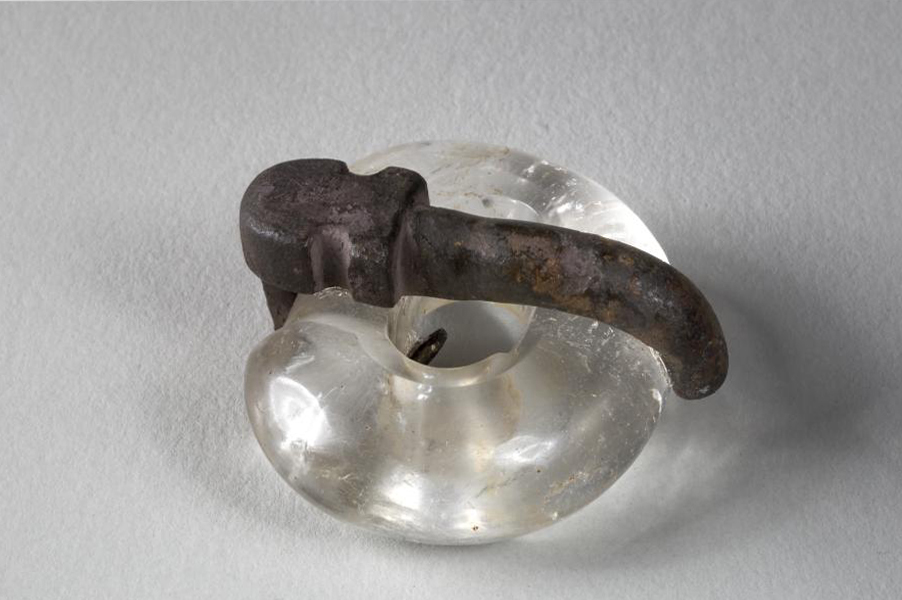
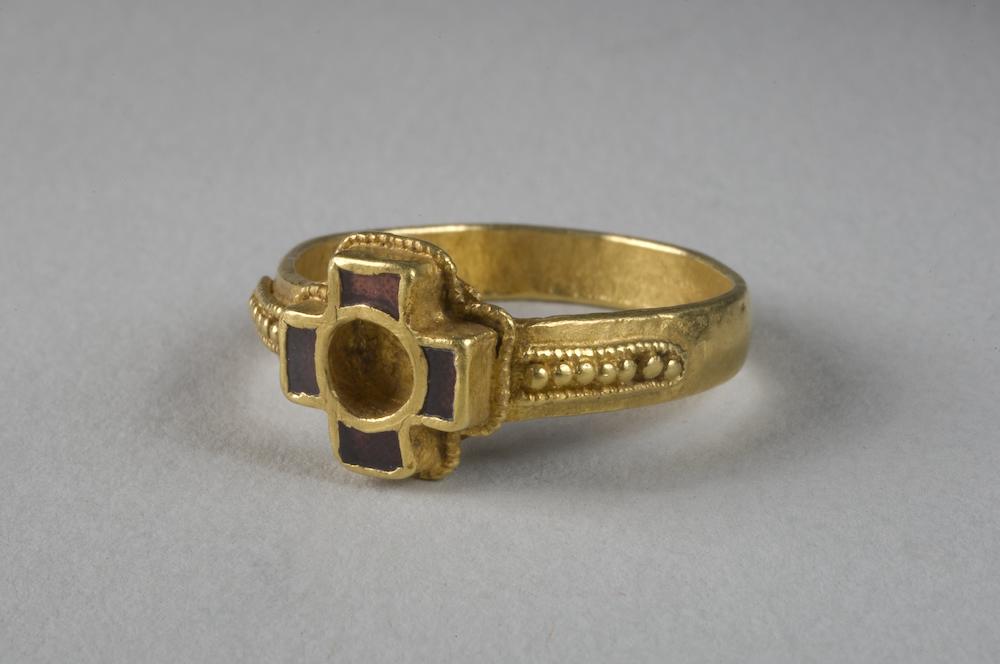
(1/ )
Early Middle Ages [476 / 1000]
Gold and garnet ring, Merovingian period (6th century A.D.). The cruciform head, surrounded by a gold filigree, is formed by a cloisonné decoration of four rectangular garnets, each representing a branch of the cross. The garnets are native to India. The central gold cavity, which is now empty, contained an ornament, perhaps in mother-of-pearl. It was discovered in Saint-Dizier, in Haute-Marne, in the tomb of a richly adorned Franconian teenager.
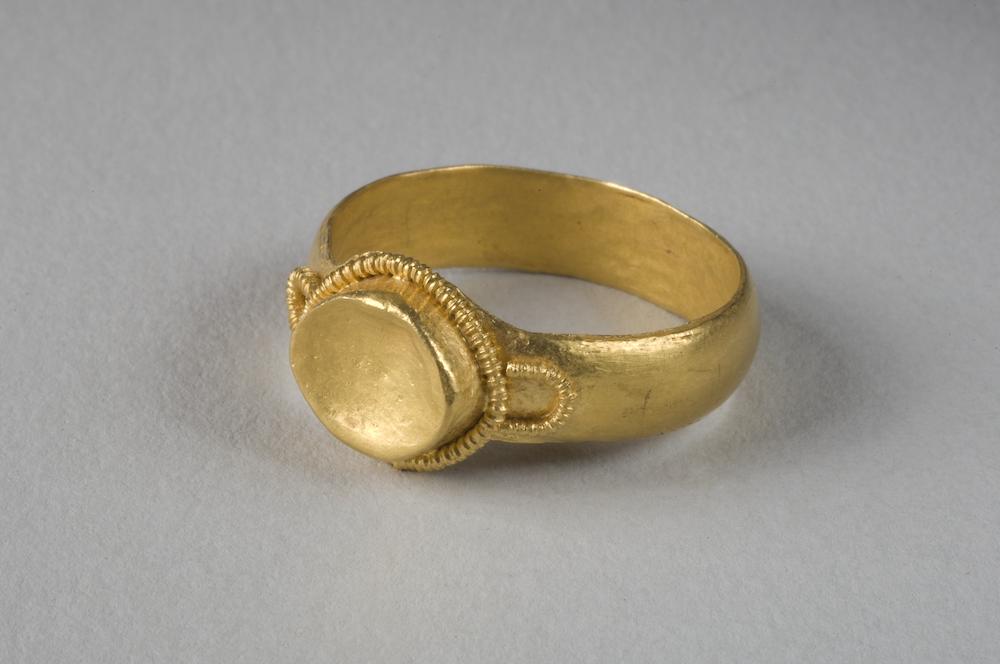
(2/ )
Early Middle Ages [476 / 1000]
Gold ring, with flat bezel and gold filigree on the shoulders, from the Merovingian period (6th century A.D.). It was discovered in Saint-Dizier, in Haute-Marne, in the burial chamber of a member of the high Frankish aristocracy, on the site of the right hand of the deceased.

(3/ )
Early Imperial [27 / 235]
Gods for war
LRomans worship a multitude of deities, each of which governs one or another aspect of human life. Minerva, among other attributions, is the goddess of war; she represents well-regulated warfare, contrary to Mars who presides over the most violent battles. Ancient cameos often represent deities. These objects functioned as amulets: for the possessor of this exceptionally fine example - probably a high-ranking personage - it was a matter of attracting the goddess's benevolence in his military ventures. While Minerva is often depicted motionless and peaceful, the emphasis here is on her character as a fighter, armed from head to toe and mounted on a chariot drawn by two horses in full race.

(4/ )
Early Imperial [27 / 235]
The Face of Love
Cameos are small objects made of stone or glass paste with carved or molded decoration in slight relief. Closely associated with the field of adornment, this production was developed by the Romans and spread to Gaul from the time of the High Empire. The iconography often draws from the Greek-Roman mythological repertoire. Here, the combination of a childish face with full cheeks and a pair of wings, no doubt allows one to recognize Éros, the personification of love desire.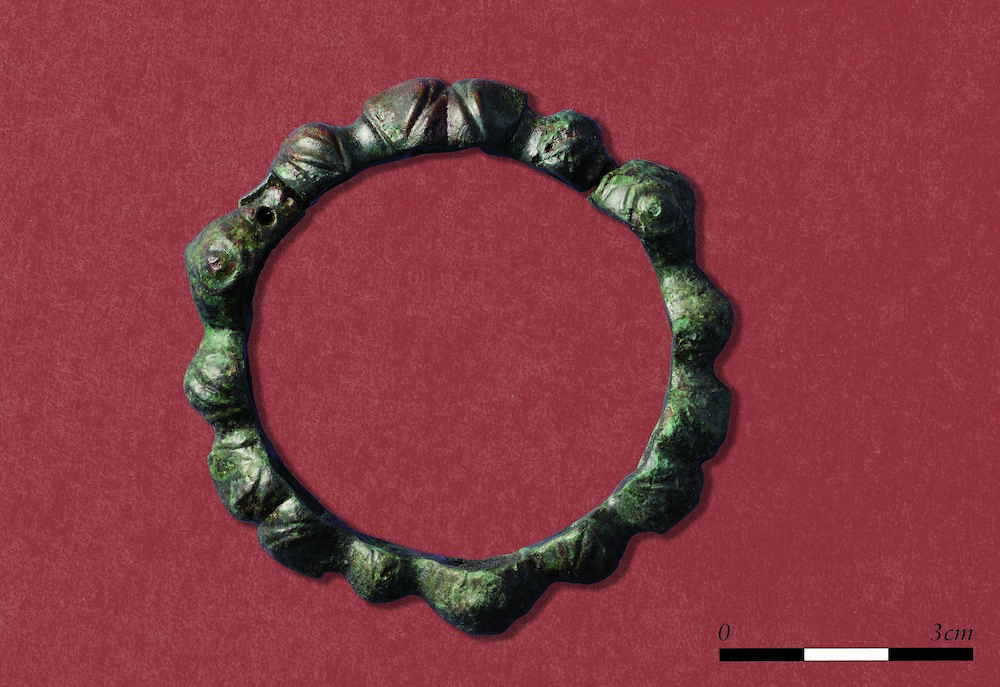
(5/ )
2nd Iron Age [- 480/ - 50]
Bracelet with relief decoration typical of the Celtic world, equipped with a removable closing system, dated to the late 3rd-early 2nd century BC. This bracelet was found at Lacoste, in Gironde, in an ancient artisanal settlement of the Second Iron Age (250-130 B.C.).
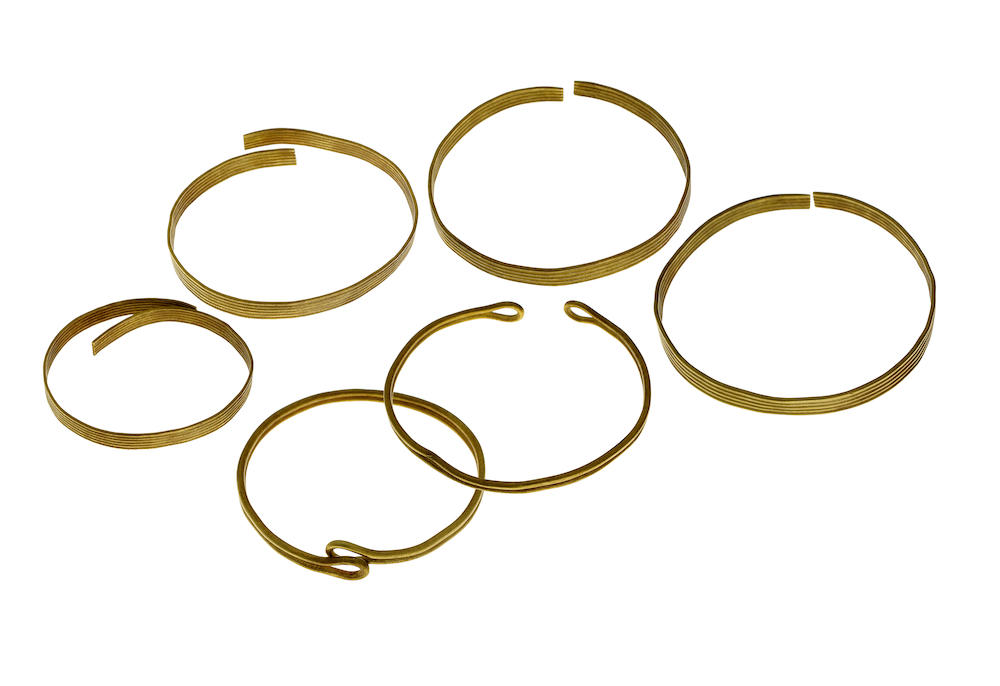
(6/ )
Early Bronze Age [- 2200/ - 1600]
Six gold bracelets from the Final Bronze Age (1400 to 800 BC). At the end of the Bronze Age, metallurgy was in full expansion and Brittany was at the heart of a vast network of exchanges. While deposits of bronze objects are quite frequent, those with gold objects are much rarer. This practice of burial is probably associated with a religious or funerary cult.
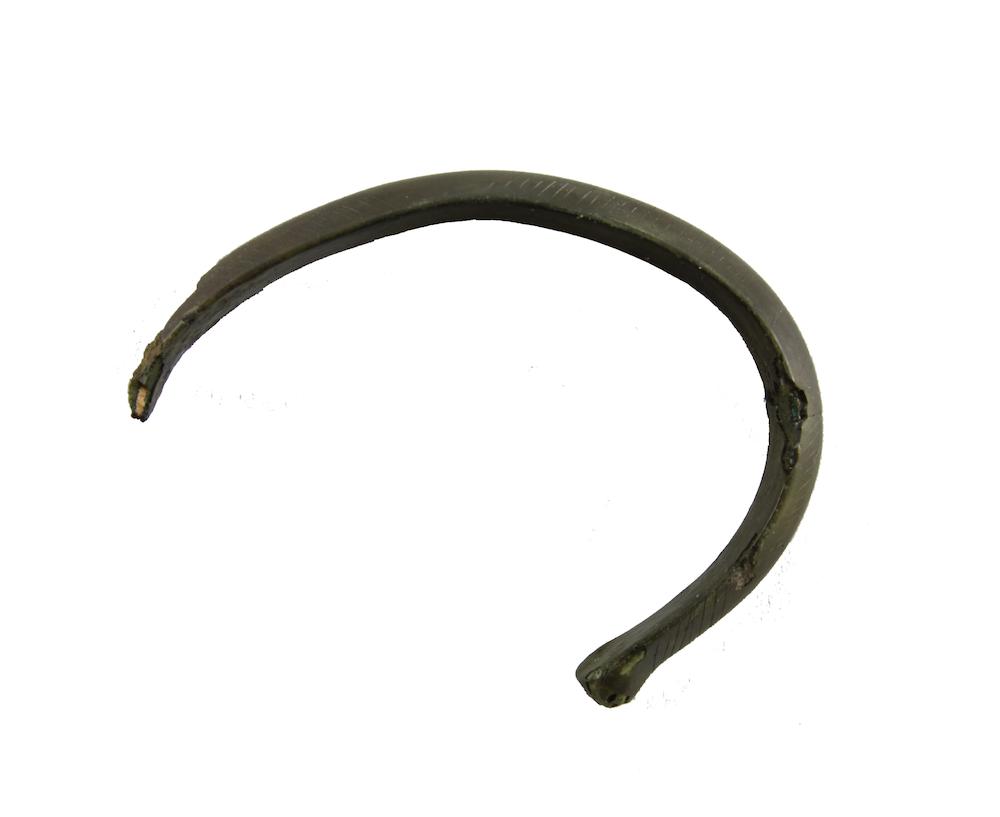
(7/ )
Final Bronze Age [- 1400/ - 800]
An almost complete bronze bracelet with a triangular cross-section. From an isolated deposit of furniture from the Final Bronze Age (1400 to 800 B.C.), this bracelet seems to have been intentionally broken, like other objects from this same deposit.
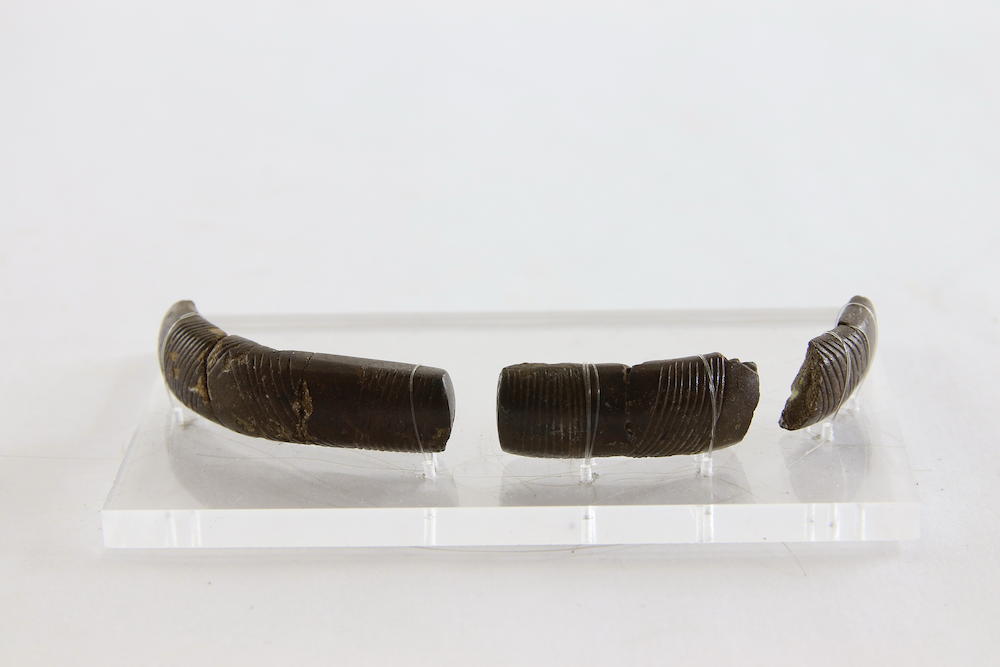
(8/ )
Final Bronze Age [- 1400/ - 800]
These fragments of a bronze bracelet, decorated with hatching and half-moon cross-section, come from a Late Bronze Age (1400 to 800 BCE) furniture deposit. This bracelet, like other objects from this deposit, appears to have been intentionally broken.
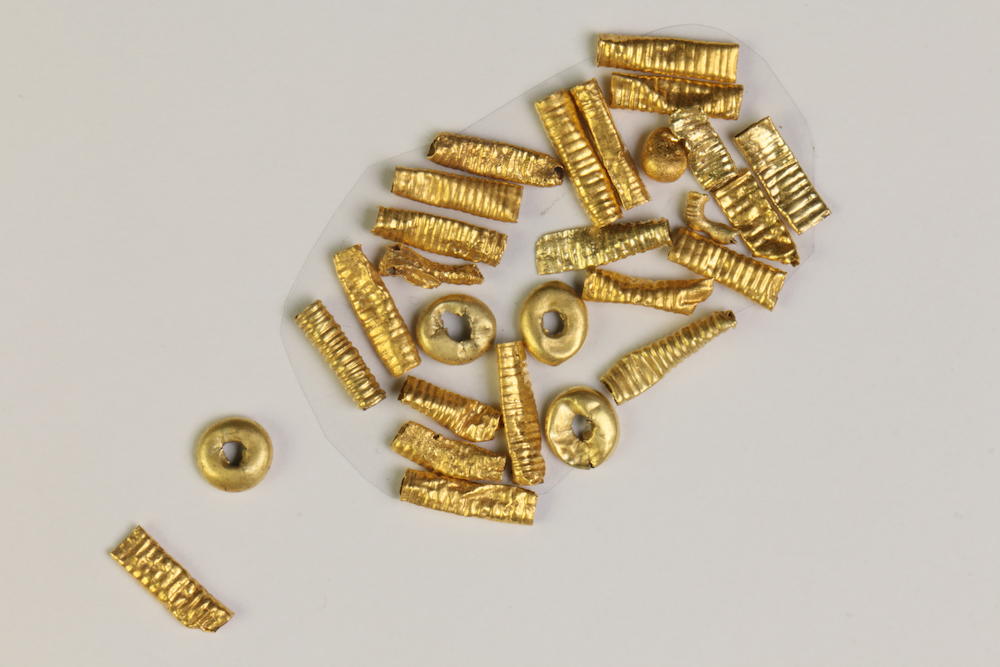
(9/ )
Early Imperial [27 / 235]
Tubular gold bead necklace from the Early Period. It was found in a rich cremation tomb that also contained ivory beads. This necklace testifies to the prosperity of the landed aristocracy of the Early Kingdom.
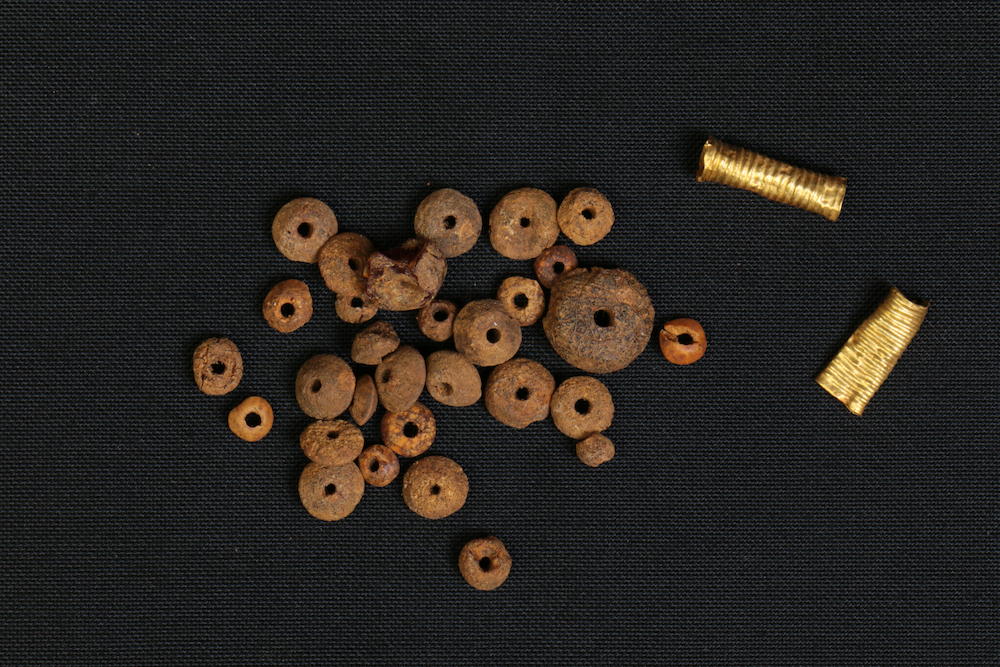
(10/ )
Bronze Age [- 2200/ - 800]
Amber bead necklace and gold ribbed tubular beads. These items were found in the burial of a Bronze Age woman. The aesthetic qualities and rarity of amber made it a sought-after product for the Bronze Age elite. This raw material was generally from Jütland and the Baltic Sea coast.
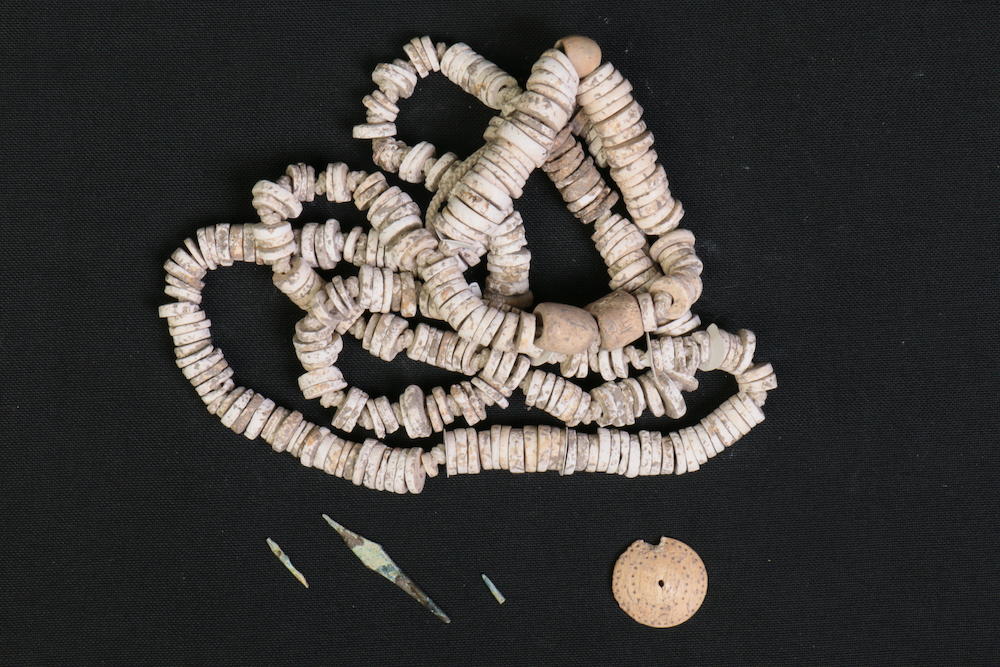
(11/ )
Bronze Age [- 2200/ - 800]
Diamond-shaped awl, copper alloy points and bone bead necklace from the Early Bronze Age (2200 to 1600 BC), found in a woman's burial site.
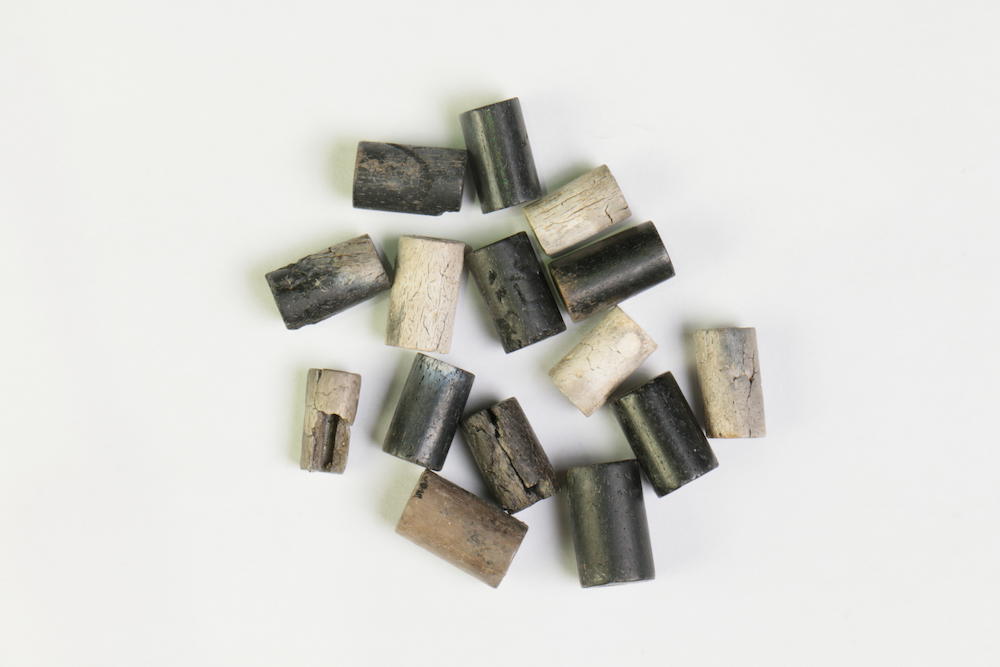
(12/ )
Bas-Empire [235/ 476]
Fifteen tubular ivory beads from the Early Period. They were found in a cremation tomb. During the Late Antiquity, the production of ivory experienced an unprecedented boom. The aristocracy is fond of this exotic luxury product that is brought from Africa or India.
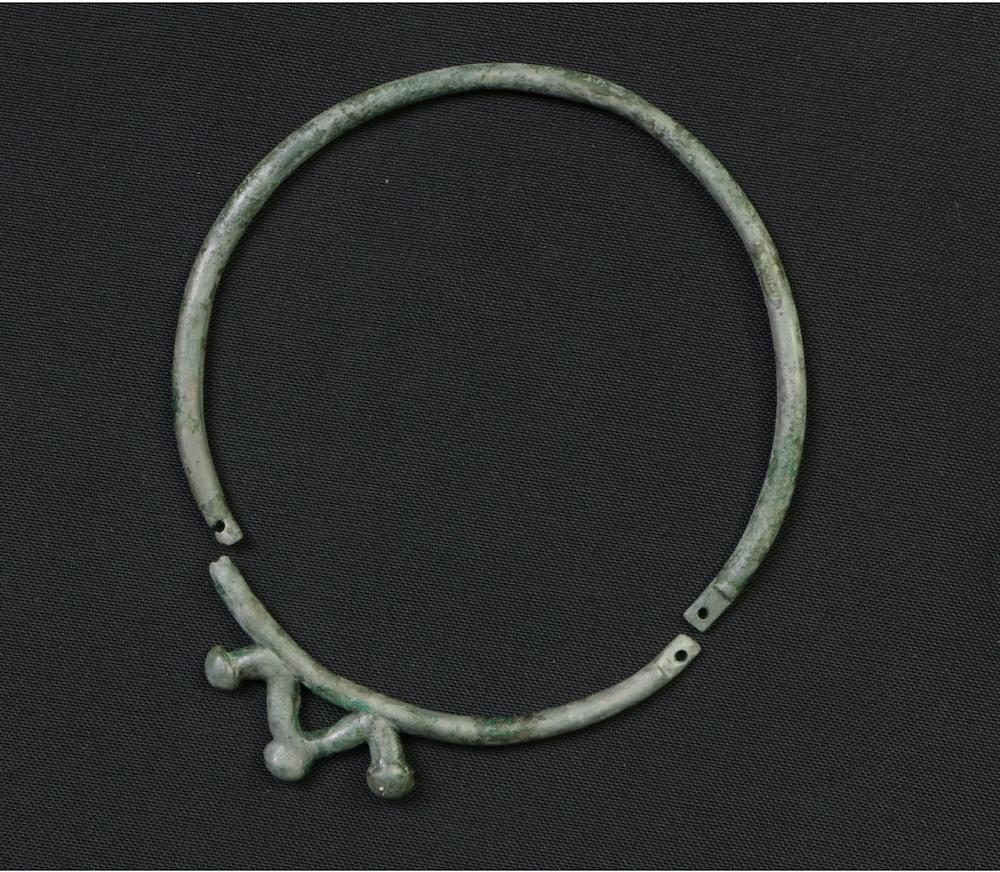
(13/ )
2nd Iron Age [- 480/ - 50]
A Gallic-era copper alloy child's necklace that opens with a removable element. Discovered in a burial site around the neck of a 6-8 year old child, it is attributed to the Second Iron Age (between the 4th and 3rd centuries BC).
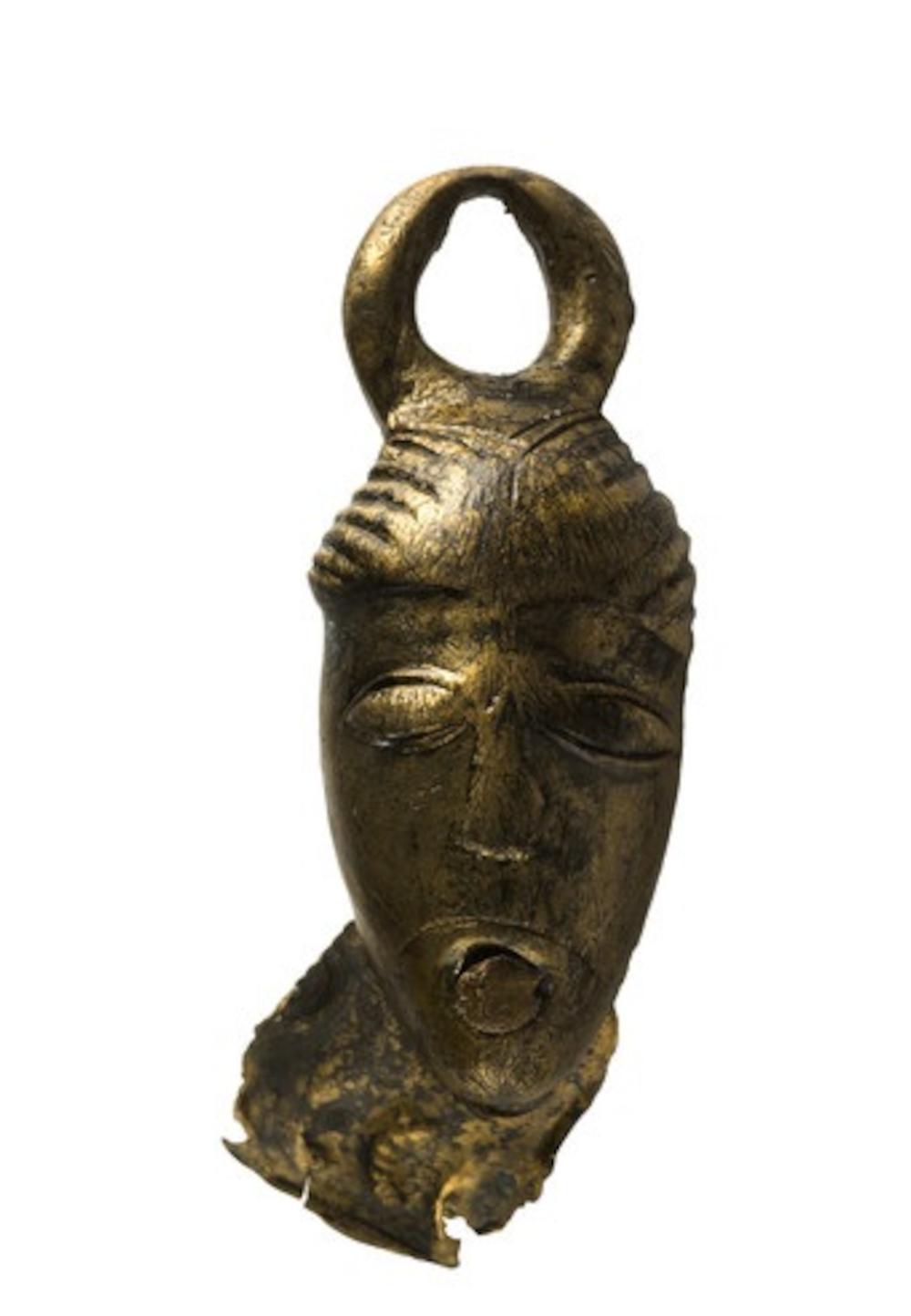
(14/ )
Iron Age [- 800/ - 50]
Prestigious head
This bronze element was used to attach the handle to the top of a bucket. The face that adorns it is schematic, except for the hair, which is carefully incised. The head is a recurring motif in Celtic art, especially in IIe and Ifirst centuries BC-C.: it decorates weapons, ornaments and everyday utensils. Its importance raises questions: are they divinities, of prestigious windows, or even of chiefs? This motif could also refer to the severed heads of enemies, which the Gauls brought back from the battlefield.
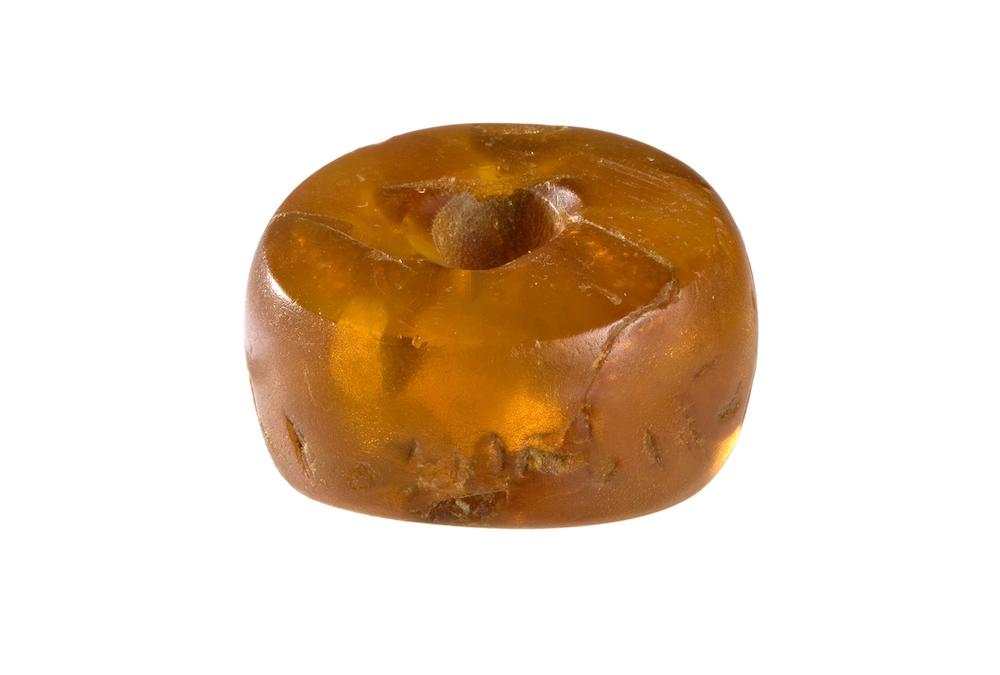
(15/ )
Protohistory [- 2200 / - 50]
Amber bead from the Baltic, perforated, with plant inclusions. Discovered in the Loire-Atlantique region, it has been dated to around 800-500 BC. Rare are the discoveries of objects of this type dated to the Iron Age. This bead testifies to the distant exchanges of this western region, undoubtedly facilitated by the presence of the Loire and its estuary.
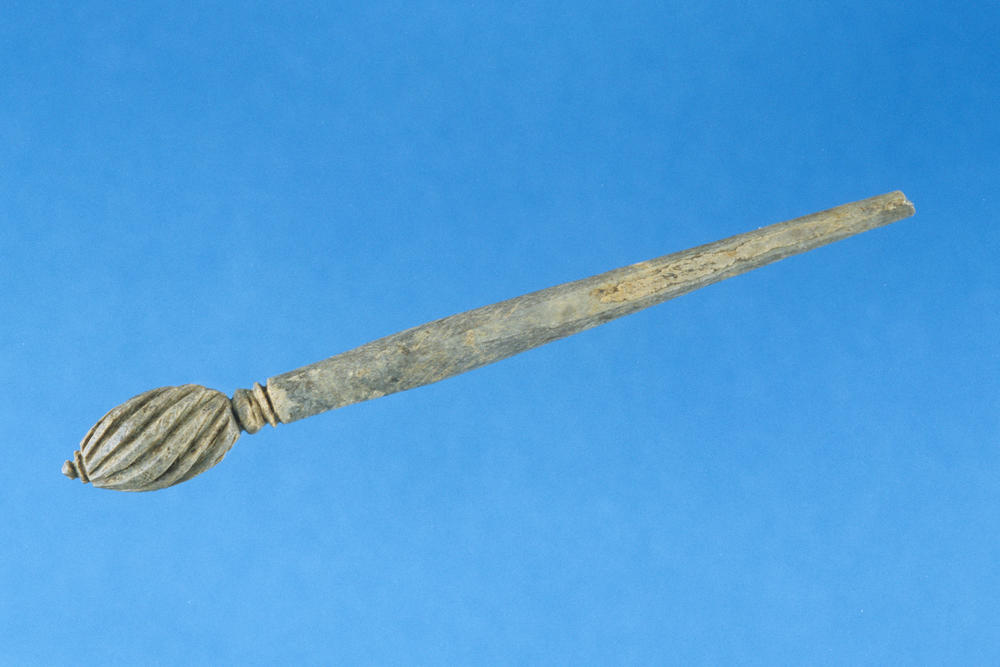
(16/ )
Bas-Empire [235/ 476]
Bone hairpin from the Late Period (5th century A.D.). Its head, pear-shaped and grooved, is topped by a button. The tip of the pin is broken.
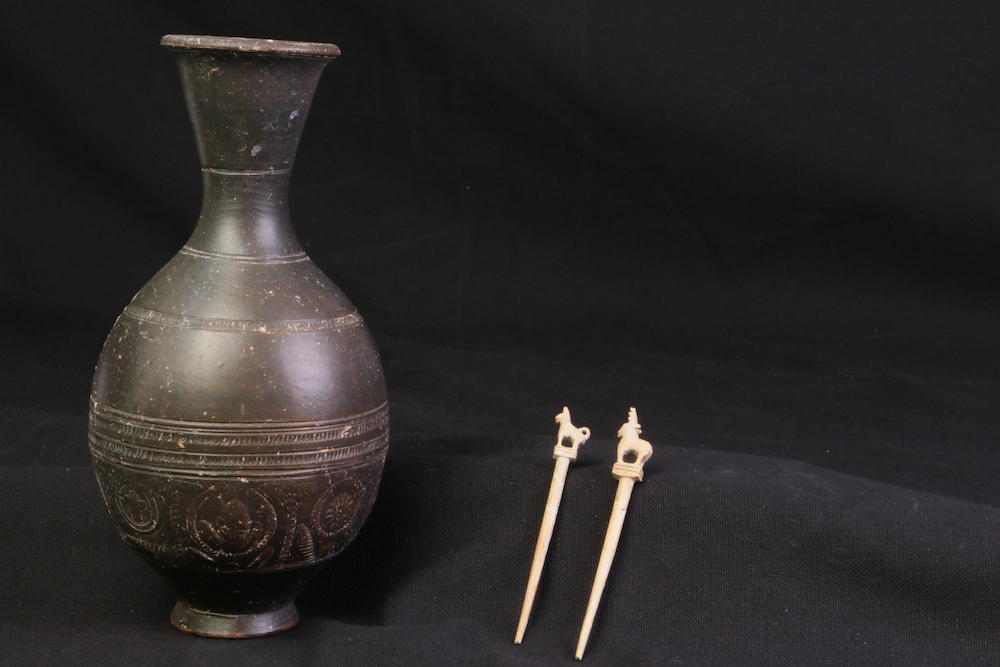
(17/ )
Bas-Empire [235/ 476]
This metallescent ceramic bottle and these bone hairpins with zoomorphic decoration were found in an adult's tomb in a necropolis of the High Kingdom (2nd-3rd century CE).
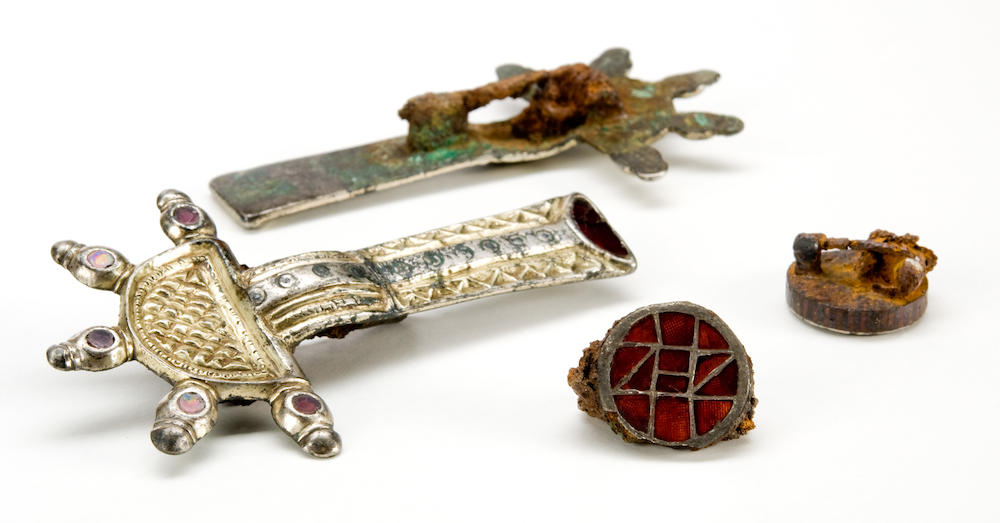
(18/ )
Early Middle Ages [476 / 1000]
Two asymmetrical annealed fibulae and two circular cloisonné fibulae from the Merovingian period (6th century AD). These jewels were discovered in Saint-Dizier, in Haute-Marne, in the tomb of a richly adorned Franconian teenager. The first ones are made of silver, their head is extended by five extremities inlaid with a semi-circular garnet and their foot with a rectangular garnet. The second ones, found on the neck of the deceased, have a cloisonné decoration of garnets. Their rim is decorated with a copper damascene.
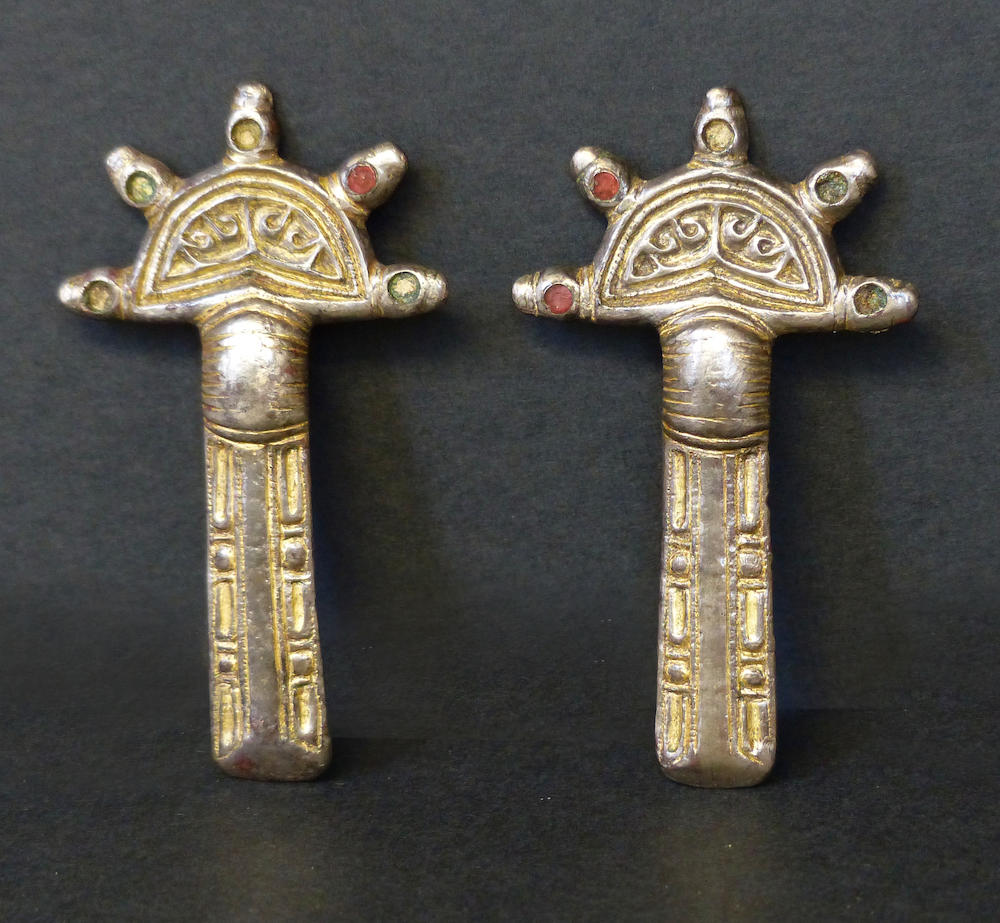
(19/ )
Early Middle Ages [476 / 1000]
Pair of asymmetrical digitate fibulae found in a female burial.
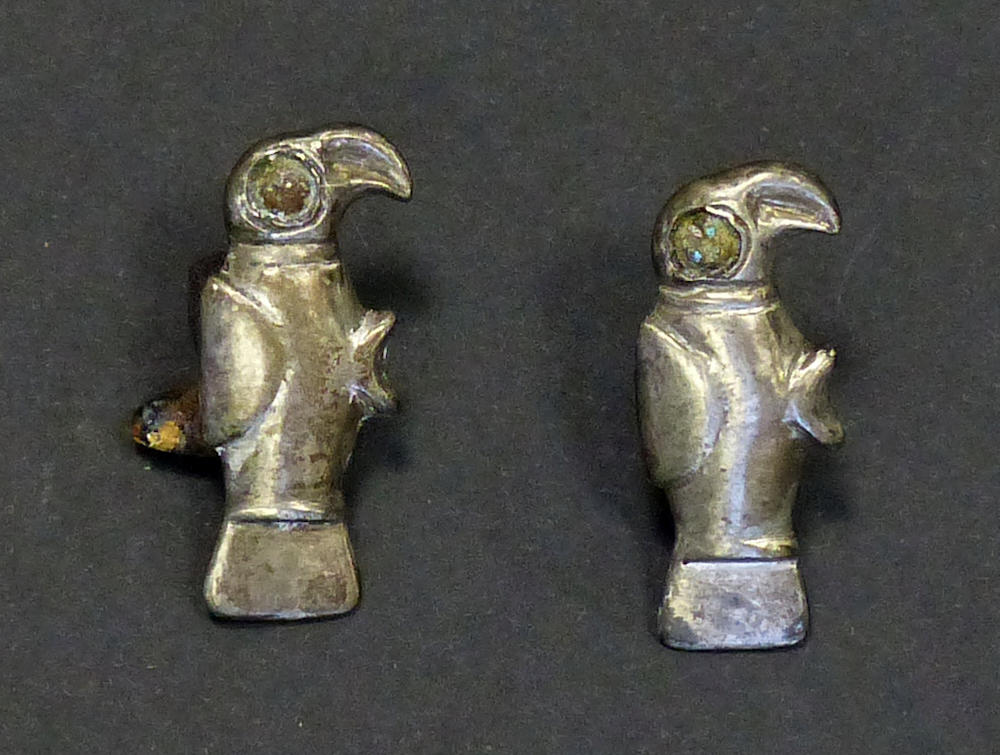
(20/ )
Early Middle Ages [476 / 1000]
Pair of silver aviform fibulae found in a burial site. Their shape is characteristic of Frankish art around 500.
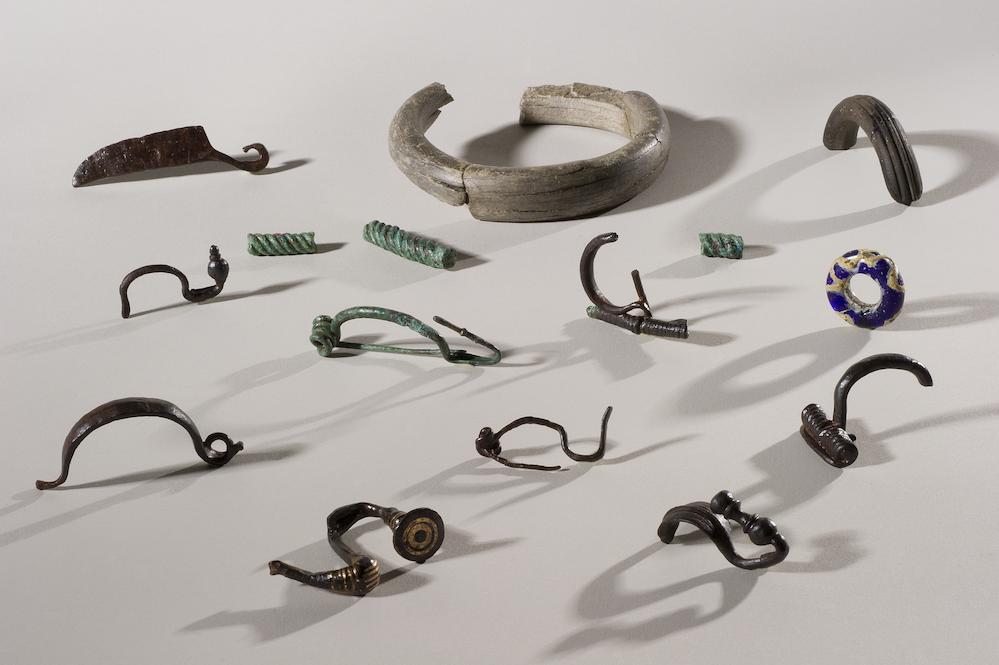
(21/ )
1st Iron Age [- 800/ - 480]
Elements of adornment from the Gallic period (6th century B.C.): fibulae, bracelets, hair rings and yellow and blue glass beads. They were found in Bordeaux, during the excavation of a residential area that extended over a natural terrace facing the Garonne River.

(22/ )
Bas-Empire [235/ 476]
This crossbow fibula is an element of Germanic adornment, frequently discovered in military contexts in northern Gaul. On the other hand, this type of object is rare in southern Gaul. The example from Toulouse, dated to the end of the 4th-beginning of the 5th century, is one of the most southern ones known to date.
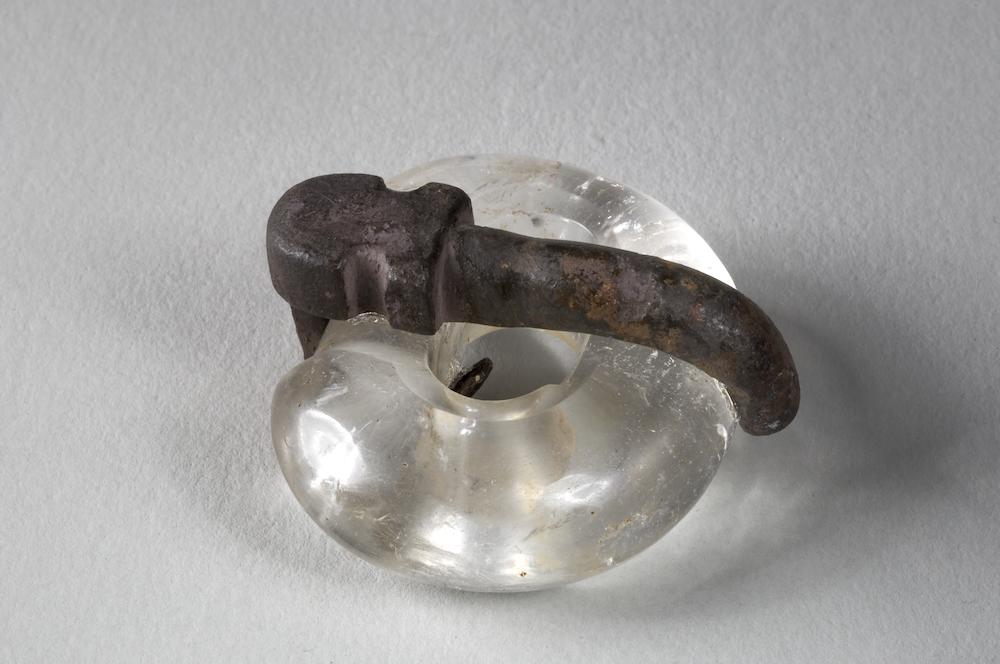
(23/ )
Early Middle Ages [476 / 1000]
Oval belt buckle made of rock crystal and silver with a shield-shaped base, from the Merovingian period (6th century AD). It was part of a rich collection of furniture found at Saint-Dizier, in the Haute-Marne, in the burial chamber of a young man of the Frankish aristocracy.
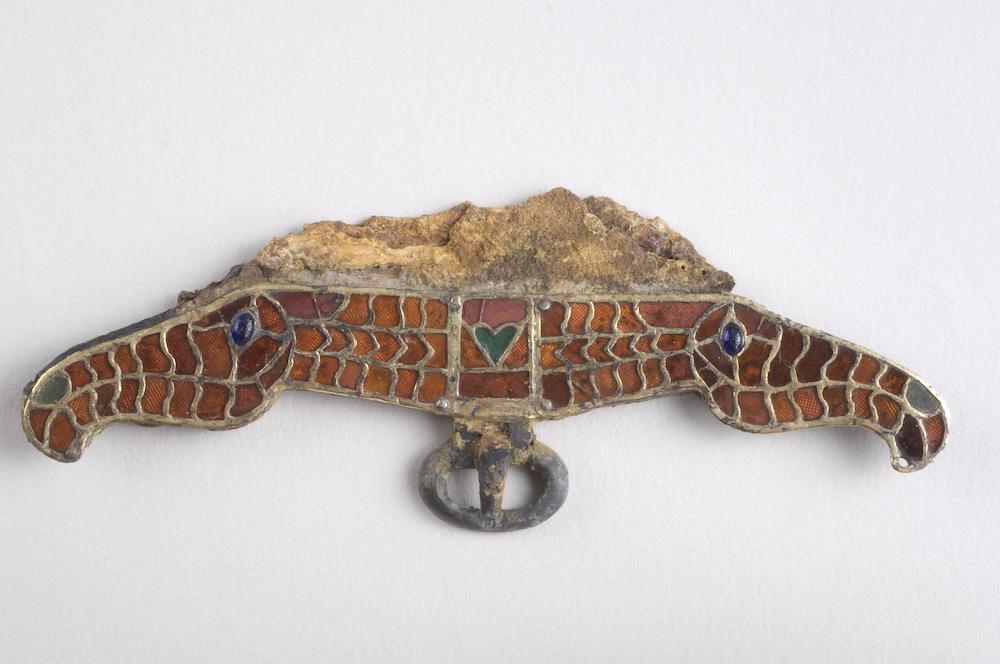
(24/ )
Early Middle Ages [476 / 1000]
between 470 and 570 iron (case of the cloisonné, barb of the buckle), silver, (pearl, rivets, buckle), gold (pearl), glass (eyes and nostrils), garnet, wood (clasp reverse), fabric, leather (on the reverse old calf) Clasp of aumônière with the ends curved in horse head. The decoration consists of cloisonné garnets and green and blue glassware. The buckle is oval and truncated cone-shaped pin straight. Clasp cloisonné with sealing garnets and glass.
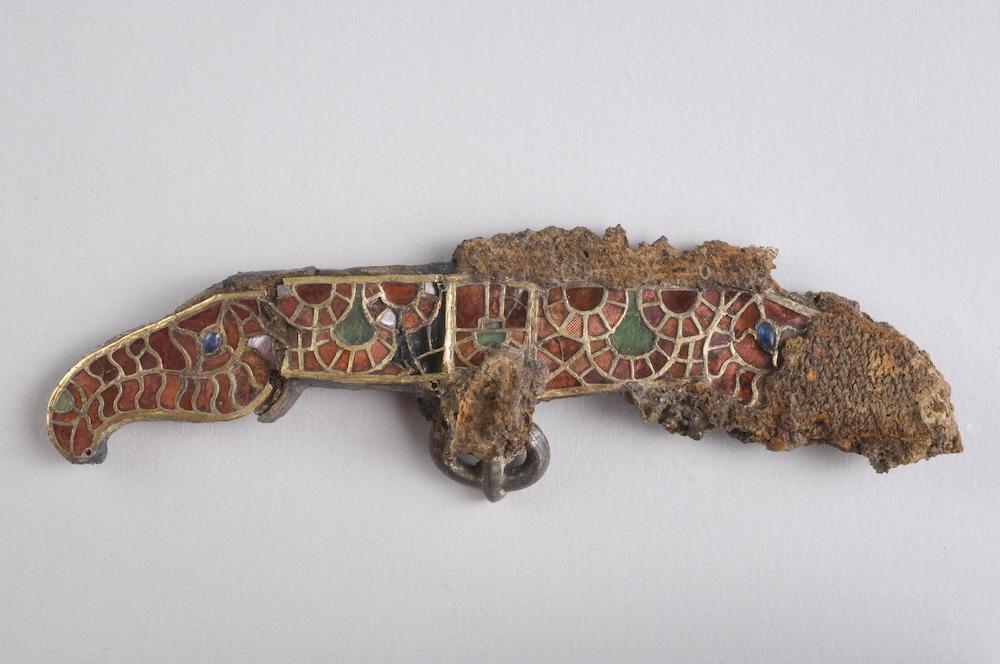
(25/ )
Early Middle Ages [476 / 1000]
Clasp of a chaplain (purse worn at the belt) of the Merovingian period (6th century AD). It presents a gold decoration cloisonné with garnets and glass showing horses' heads. The central field of the clasp is inlaid with lapis lazuli. This chaplain's clasp was found in Saint-Dizier, Haute-Marne, in the burial chamber of a member of the high Frankish aristocracy, in the place of the deceased's back.